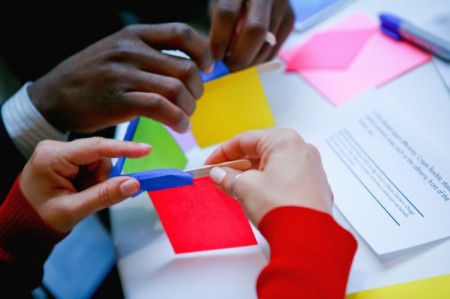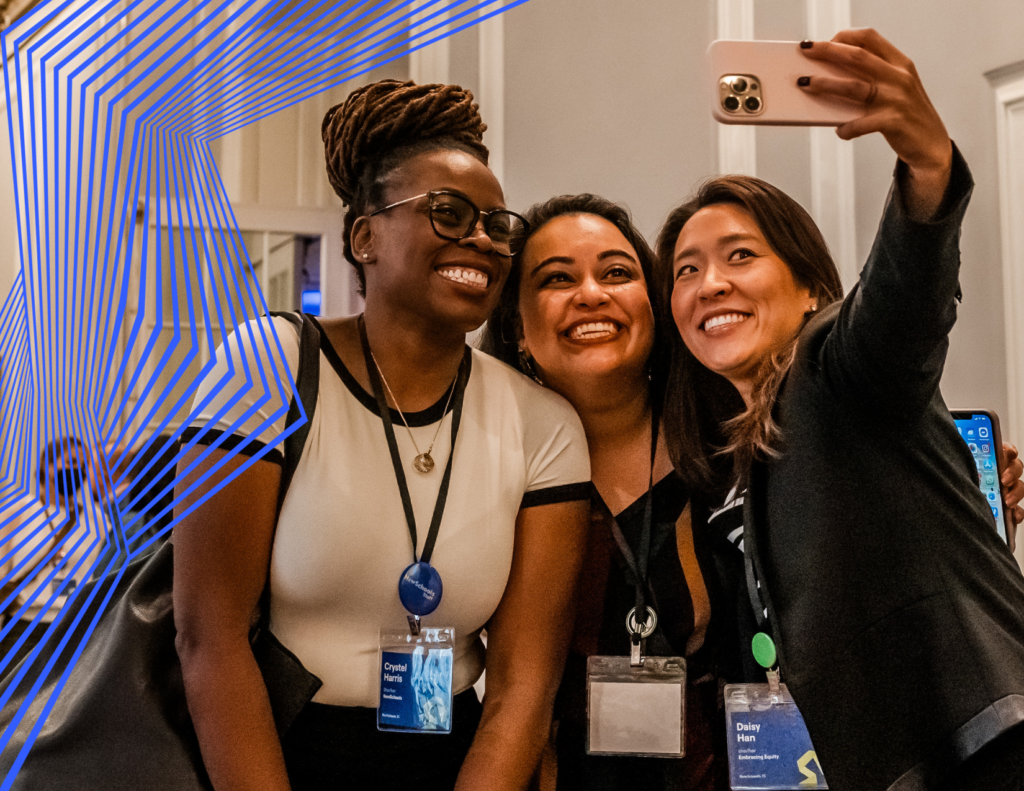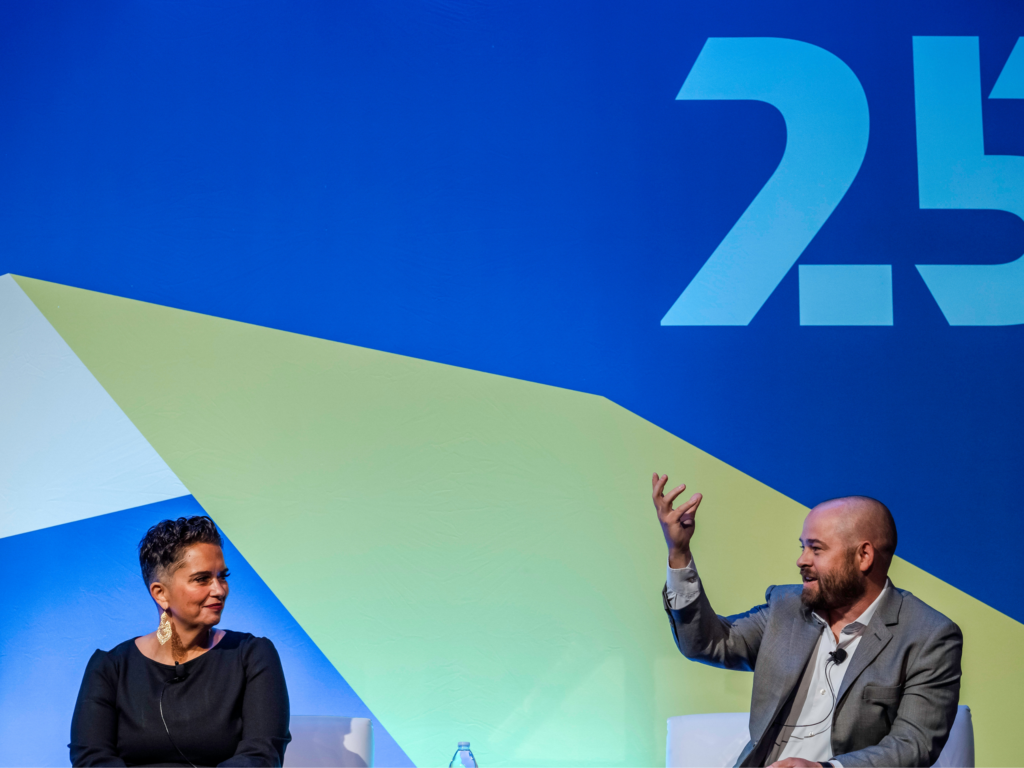Stanford d.school‘s Rich Crandall and Adam Royalty led an energetic session introducing techniques of Design Thinking and led Summit participants in immediately apply them in an interactive session at this year’s Summit. There were varying levels of comfort with, and understanding of, design thinking, but with a strict, clear process and deliberate steps everyone produced something tangible.
The process of design thinking involves 5 steps in a loop, Rich and Adam explained to the audience. The first step is to empathize, or determine who stakeholders are and interview them to learn about their needs and perspective. The next steps are to define the challenge, ideate—or generate solutions—prototype, and then test.

The design thinking process offers users a map to exercise creativity and draws from a collection of mindsets for innovation. The process—and therefore the results—of design thinking is human centered, biased towards action, creates opportunities for radical collaboration, encourages a culture of prototyping and iterative progression, demands users show and not tell and remain mindful of process.
Participants went through several exercises to help engage these mindsets. First, they were given prompts with a partner, and invited to “build as many prototypes as you can using Popsicle sticks, masking tape and post-its.” The prompts came from real challenges schools have tackled, and ranged from ways to identify moments of potential teacher collaboration to ways to use physical space differently. This process is “building to think—as you build out, new things will occur to you,” Rich Crandall explained.
The 60+ participants had varied levels of comfort with the design process. Some had experience with design thinking and jumped quite naturally into prototyping. Other participants were new to design thinking, and had to be a little more deliberate, keeping themselves and their partners on track. Rich and Adam encouraged the audience with reminders that “there’s no right idea” and “we are just supposed to visualize our idea, no matter how crazy.”
Overall there was a lot of collaboration between pairs, and efforts to try to get on the same page. In sharing out, it was clear that people took drastically different approaches to the topics. Some built physical spaces, showing how walls could fold and move. Other pairs used Popsicle sticks to represent students and charted their progress in intervals on the stick.
When sharing prototypes with another pair, the feedback was strong yet very productive. Whether bringing new interpretations of the problem, pointing out flawed assumptions or building on and improving the current prototype, the feedback forced both sides to think about the problem, and try to arrive at the best solution.
Rich and Adam also led participants through larger brainstorming sessions with groups of five, setting the following guidelines for productive brainstorming:
- Defer judgment
- Go for volume
- One conversation at a time
- Be visual
- Headline
- Build on the ideas of others
- Stay on topic
- Encourage wild ideas (“the good, doable ideas are next to the wild ones”)
Audience members then brainstormed solutions to challenges like recruiting better talent into the education sector and how we might make Advanced Placement classes more accessible to underserved students. Every group took a different approach. Some had everyone writing at the same time on the wall, while other groups fleshed out ideas through conversation and only wrote conclusions.
Rich and Adam concluded by discussing how to move on from a brainstorming session by selecting the most promising ideas. For ideation, select multiple concepts: the safe bet, long shot, and most meaningful. When selecting ideas, you should “use contrasting selection criteria to preserve innovation,” they explained, so that you don’t end up just with safe bets or long shots, but a mixture of these.

